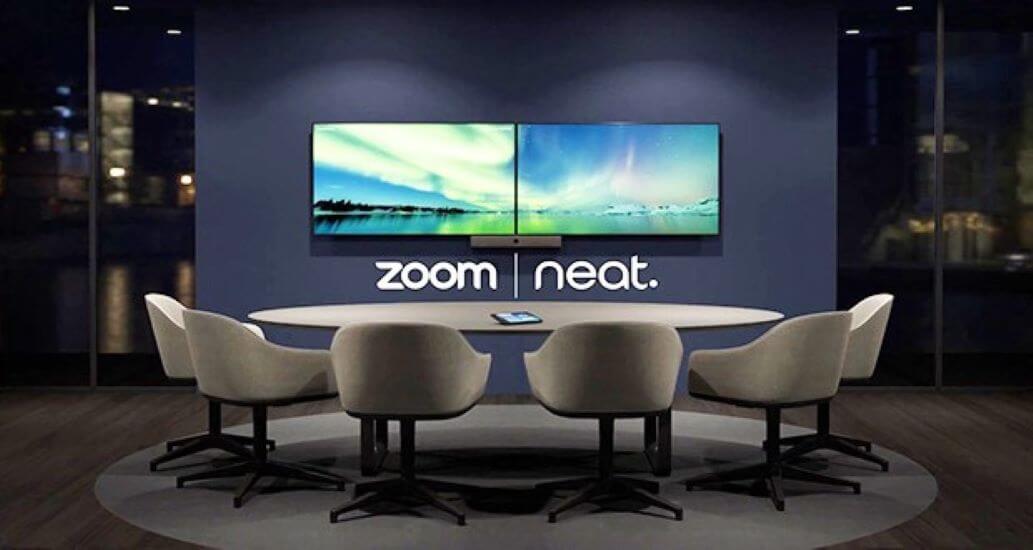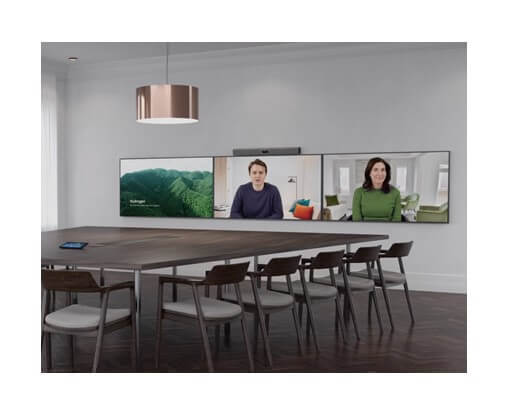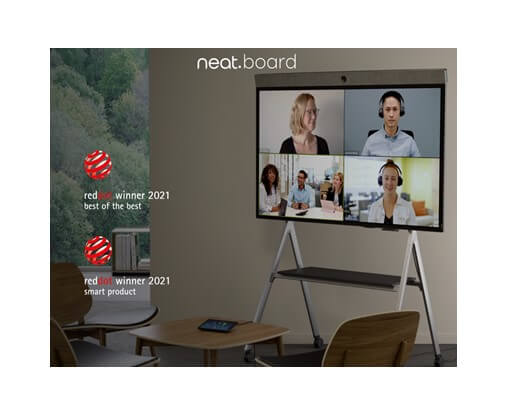
The News: Zoom announced an investment of an additional $30 million in device vendor Neat, edging the video device company’s total valuation to $640 million and making this the third investment to date by Zoom in the company. Read the announcement from Zoom here and the press release from Neat here.
Zoom Adds $30 Million to its Investment in Neat, Video Device Vendor
Analyst Take: ‘Neat’ is one of the buzzwords I use sarcastically when I actually think something is not-so-neat. But in the case of Neat, the video device company, they are, in fact, pretty neat. As in doing very cool things in the collaboration space focused on optimizing user experiences in video conferences. That’s why it was no surprise to see Zoom’s announcement about its continued investment in the company with this additional $30 million, bringing Zoom’s total investment in Neat to $41 million. These companies are made for one another.
The Backstory on Neat and a Look at Neat Products
Founded in Norway, Oslo, the company’s products are aimed at facilitating collaboration and communication, regardless of where meeting participants are located, and working the way people work — and enhancing the collaboration experience. Products include the Neat Board, the Neat Bar Pro, the Neat Bar, and the Neat Pad.
The below image is a shot of the Neat Bar Pro, which is comprised of three large screens which work well for large meeting spaces. The Neat Bar Pro can detect, enlarge, and follow all the participants in a room, in a full close-up, no matter where they’re positioned. There’s no hiding from the Neat Bar Pro. In all seriousness, it’s clear the user experience here is intended to serve up as close to a face-to-face experience as possible. In our global workplace that is now largely personified by hybrid work and a work from anywhere workforce, this makes a lot of sense.

Image Credit: Neat
The Neat Board is billed by the company as “the complete meeting room package” in an all-in-one device. The Neat Board has a 65-inch multi-touch screen, a versatile wide-angle camera, and a powerful audio system. The Neat Board is also designed to facilitate wireless content sharing by enabling annotations and whiteboarding. You can see the neat board in action here, and probably notice the product received some award recognition from Red Dot Design, an international design competition for product design, communication design, and design concepts.

Image Credit: Neat
The Neat Board is particularly interesting to me because of its intelligent functionality. The audio system uses machine learning to suppress all noise outside the camera’s field of view, while also enhancing the voice recording taking place. The camera dynamically captures individuals or groups in the room and reacts to movement, which allows remote participants to actually see what’s going on by way of identifying body language and facial expressions — things remote participants don’t normally get to experience. The Neat Board also uses sensors to measure air quality and humidity in rooms, which could be helpful at some point.
I can see the Neat Board being particularly appealing because of the ease of use it affords. Users can opt for a wall mount, or a floor stand with or without wheels, so it can be easily transported from location to location, with just one cable to connect. The Nest Board is intuitive and wakes up when it senses someone has entered the room, and it’s controlled by a simple finger tap.
Neat-as-a-Service Offerings
Another reason I’m guessing Neat is attractive to Zoom is its as-a-Service offering that allows users to equip offices (remote or otherwise), huddle rooms, or even personal workspaces with Neat devices on a subscription basis. It looks like the only devices offered aaS right now are the Neat Bar (for audio) and the Neat Pad (a meeting room controller), so it will be interesting to watch the evolution of that offering. I have no doubt there is more to come on the aaS hardware offering front.
Key Takeaway: Why Zoom’s Interest in Neat Matters
I spent a bunch of time here talking about Neat and walking through the hardware solutions the company provides, but the key takeaway here is that Zoom’s investment in Neat gets the company squarely into the hardware business — and it makes perfect sense.
Zoom provides the collaboration platform, Neat provides the hardware and entrée for Zoom into as-a-Service video conferencing capabilities. From a business strategy standpoint, this is very good for Zoom. It also keeps other Zoom hardware partners on their toes and allows Zoom to hedge against vertical stacks of other providers. In a world that is embracing a hybrid workplace at a fast clip, better, more intuitive, more innovative collaboration experiences benefit everyone.
A last note, Neat products can be used across both Zoom and Microsoft Teams, but the larger the Zoom investment in the company is, the less I expect to see Microsoft Teams using the service. I could be wrong here, but let’s watch that and see what happens.
Disclosure: Futurum Research is a research and advisory firm that engages or has engaged in research, analysis, and advisory services with many technology companies, including those mentioned in this article. The author does not hold any equity positions with any company mentioned in this article.
Other insights from Futurum Research:
Zoom Crosses The Billion Dollar Quarter Mark In Its 2022 FY Q2
Cisco Finds Another Big Security Flaw With Zoom’s Connector For Cisco
No Surprise, Zoom Destroys Analyst Estimates In Fiscal Q1
Image Credit: AV Magazine
The original version of this article was first published on Futurum Research.
Shelly Kramer is a Principal Analyst and Founding Partner at Futurum Research. A serial entrepreneur with a technology centric focus, she has worked alongside some of the world’s largest brands to embrace disruption and spur innovation, understand and address the realities of the connected customer, and help navigate the process of digital transformation. She brings 20 years' experience as a brand strategist to her work at Futurum, and has deep experience helping global companies with marketing challenges, GTM strategies, messaging development, and driving strategy and digital transformation for B2B brands across multiple verticals. Shelly's coverage areas include Collaboration/CX/SaaS, platforms, ESG, and Cybersecurity, as well as topics and trends related to the Future of Work, the transformation of the workplace and how people and technology are driving that transformation. A transplanted New Yorker, she has learned to love life in the Midwest, and has firsthand experience that some of the most innovative minds and most successful companies in the world also happen to live in “flyover country.”

